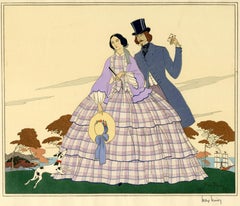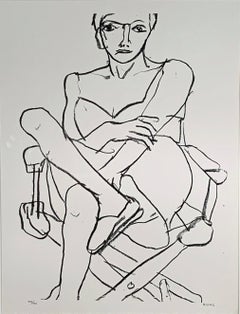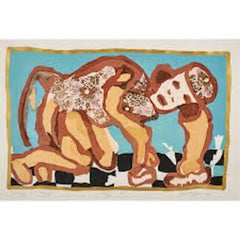Ifpda International Fine Print Dealers Association Figurative Prints
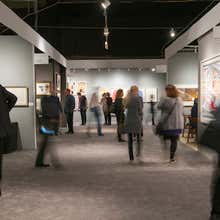
Launched in 1987, the International Fine Print Dealers Association has continually set the bar for quality and ethics while promoting prints as original works of art to generations of collectors, curators and art lovers. With over 160 members in 13 countries, the IFPDA is a worldwide community of leading dealers and editions publishers who represent the full spectrum of printmaking. Each year, the IFPDA hosts the IFPDA Print Fair in New York, the only major fair dedicated to fine-art prints.
Early 1900s Ifpda International Fine Print Dealers Association Figurative Prints
Etching, Aquatint
1940s Art Deco Ifpda International Fine Print Dealers Association Figurative Prints
Lithograph
1920s Art Deco Ifpda International Fine Print Dealers Association Figurative Prints
Stencil
1960s Ifpda International Fine Print Dealers Association Figurative Prints
Lithograph
Late 20th Century Modern Ifpda International Fine Print Dealers Association Figurative Prints
Stencil
1920s Modern Ifpda International Fine Print Dealers Association Figurative Prints
Lithograph
1960s American Realist Ifpda International Fine Print Dealers Association Figurative Prints
Drypoint
1970s Folk Art Ifpda International Fine Print Dealers Association Figurative Prints
Lithograph
2010s Ifpda International Fine Print Dealers Association Figurative Prints
Etching, Monotype
1780s Romantic Ifpda International Fine Print Dealers Association Figurative Prints
Aquatint
16th Century Old Masters Ifpda International Fine Print Dealers Association Figurative Prints
Engraving
Late 19th Century American Modern Ifpda International Fine Print Dealers Association Figurative Prints
Drypoint, Etching
Early 1900s Impressionist Ifpda International Fine Print Dealers Association Figurative Prints
Drypoint
1880s Ifpda International Fine Print Dealers Association Figurative Prints
Drypoint, Etching
Early 1900s Art Nouveau Ifpda International Fine Print Dealers Association Figurative Prints
Aquatint
Late 20th Century Contemporary Ifpda International Fine Print Dealers Association Figurative Prints
Aquatint, Photogravure
1960s Modern Ifpda International Fine Print Dealers Association Figurative Prints
Lithograph
1930s American Realist Ifpda International Fine Print Dealers Association Figurative Prints
Etching
1920s Impressionist Ifpda International Fine Print Dealers Association Figurative Prints
Etching
1940s Ifpda International Fine Print Dealers Association Figurative Prints
Engraving
1930s Art Nouveau Ifpda International Fine Print Dealers Association Figurative Prints
Drypoint, Etching
1930s Ifpda International Fine Print Dealers Association Figurative Prints
Etching
Early 1900s French School Ifpda International Fine Print Dealers Association Figurative Prints
Etching
1970s American Modern Ifpda International Fine Print Dealers Association Figurative Prints
Lithograph
1990s Ifpda International Fine Print Dealers Association Figurative Prints
Screen
1820s Other Art Style Ifpda International Fine Print Dealers Association Figurative Prints
Woodcut
1880s Impressionist Ifpda International Fine Print Dealers Association Figurative Prints
Mezzotint
1930s Ifpda International Fine Print Dealers Association Figurative Prints
Linocut
1970s Ifpda International Fine Print Dealers Association Figurative Prints
Etching, Aquatint
1930s Ifpda International Fine Print Dealers Association Figurative Prints
Lithograph
1940s American Modern Ifpda International Fine Print Dealers Association Figurative Prints
Lithograph
1930s Ifpda International Fine Print Dealers Association Figurative Prints
Etching
2010s Contemporary Ifpda International Fine Print Dealers Association Figurative Prints
Drypoint
1990s Cubist Ifpda International Fine Print Dealers Association Figurative Prints
Lithograph
1990s Ifpda International Fine Print Dealers Association Figurative Prints
Etching
Early 1900s Art Nouveau Ifpda International Fine Print Dealers Association Figurative Prints
Aquatint
1910s Art Deco Ifpda International Fine Print Dealers Association Figurative Prints
Lithograph
1930s Ifpda International Fine Print Dealers Association Figurative Prints
Linocut
19th Century Modern Ifpda International Fine Print Dealers Association Figurative Prints
Etching
1890s French School Ifpda International Fine Print Dealers Association Figurative Prints
Lithograph
1990s Contemporary Ifpda International Fine Print Dealers Association Figurative Prints
Monotype
1860s Other Art Style Ifpda International Fine Print Dealers Association Figurative Prints
Woodcut
Mid-19th Century American Impressionist Ifpda International Fine Print Dealers Association Figurative Prints
Drypoint, Etching
21st Century and Contemporary Contemporary Ifpda International Fine Print Dealers Association Figurative Prints
Etching
1930s Ifpda International Fine Print Dealers Association Figurative Prints
Etching
21st Century and Contemporary Contemporary Ifpda International Fine Print Dealers Association Figurative Prints
Etching
1820s Romantic Ifpda International Fine Print Dealers Association Figurative Prints
Lithograph
1930s Cubist Ifpda International Fine Print Dealers Association Figurative Prints
Etching
1930s American Realist Ifpda International Fine Print Dealers Association Figurative Prints
Engraving, Etching
1920s Modern Ifpda International Fine Print Dealers Association Figurative Prints
Lithograph
1910s Cubist Ifpda International Fine Print Dealers Association Figurative Prints
Etching
1940s Ifpda International Fine Print Dealers Association Figurative Prints
Engraving
1930s Art Deco Ifpda International Fine Print Dealers Association Figurative Prints
Lithograph
1920s American Realist Ifpda International Fine Print Dealers Association Figurative Prints
Lithograph
Late 19th Century Art Nouveau Ifpda International Fine Print Dealers Association Figurative Prints
Lithograph
2010s Contemporary Ifpda International Fine Print Dealers Association Figurative Prints
Lithograph
1950s Ifpda International Fine Print Dealers Association Figurative Prints
Woodcut
Late 19th Century Art Nouveau Ifpda International Fine Print Dealers Association Figurative Prints
Lithograph
2010s Ifpda International Fine Print Dealers Association Figurative Prints
Etching
1940s Ifpda International Fine Print Dealers Association Figurative Prints
Engraving
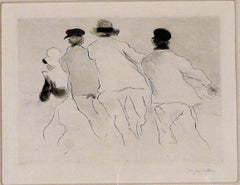
![man tipping hat PKZ [Man Tipping His Hat].](https://a.1stdibscdn.com/franco-barberis-prints-works-on-paper-pkz-man-tipping-his-hat-for-sale/a_2922/1610721000093/Barberis_PKZtippinghat_53_master.jpg?width=240)
